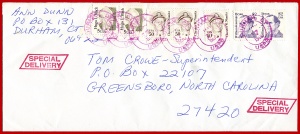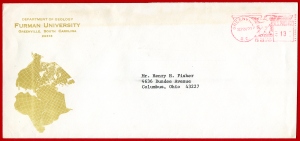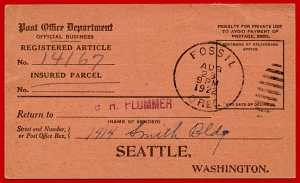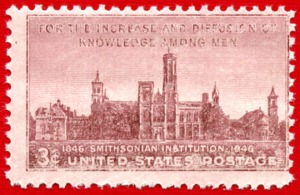Many cities have names which are or include references to paleontology based on the local terrain or history of the area. Naturally, post offices within these cities carry their names in hand or machine postmarks, precancels, etc. and these are quite collectible. One problem is finding examples but the greater problem is in knowing which names to look for.

Type 1
I’ve been asked which ones I know of, so the following list of names is what I’ve found to date, excluding names of scientists. This list may be of some assistance to you when you’re looking through stocks. I’d be pleased to add to this list should you know of any further examples.
City/Post Office Name, County, State, Years of Operation
Dinosaur, Moffat, Colorado, 1966 – Open
Fossil, Lincoln, Wyoming, 1888 – 1945
Fossil, Roane, Tennessee, 1887 – 1904
Fossil, Tarrant, Texas, 1880 – 1884
Fossil, Lincoln, Wyoming, 1886 – 1887
Fossil, Wheeler, Oregon, 1876 – Open
Fossilville, Bedford, Pennsylvania, 1874 – 1936
Mammoth, Pinal, Arizona, 1887 – Open
Mammoth, Mono, California, 1879 – 1898
Mammoth, Shasta, California, 1907 – 1921
Mammoth, Shasta, California, 1923 – 1925
Mammoth, Edmonson, Kentucky, 1881 – 1881
Mammoth, Ozark, Missouri, 1902 – 1955
Mammoth, Madison, Montana, 1877 – 1931
Mammoth, Westmoreland, Pennsylvania, 1885 – Open
Mammoth, Lipscomb, Texas, 1890 – 1894
Mammoth, Juab, Utah, 1890 – 1973
Mammoth, Kanawha, West Virginia, 1894 – Open
Mammoth, Natrona, Wyoming, 1923 – 1924
Mammoth Cave, Calaveras, California, 1883 – 1887
Mammoth Cave, Edmonson, Kentucky, 1842 – Open
Mammoth Spring, Fulton, Arkansas, 1879 – Open














































